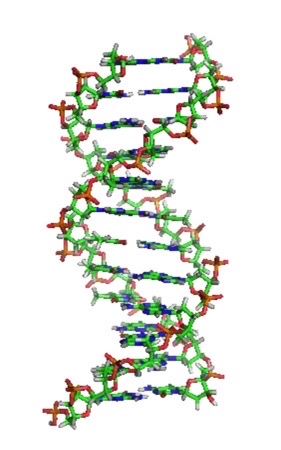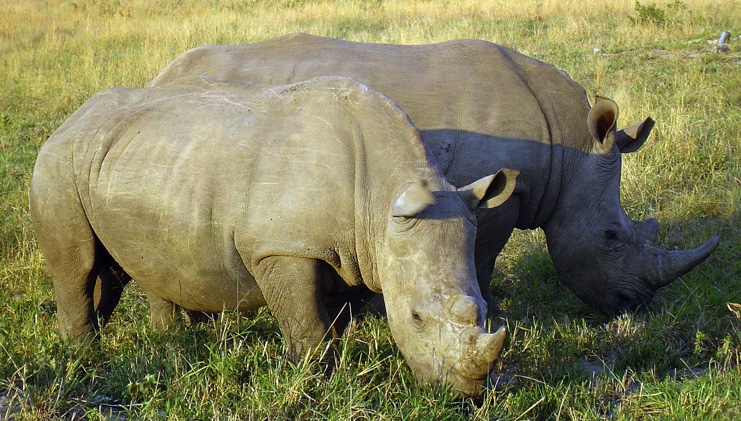On the February 15, 2001, in the science magazine Nature, a group of hundreds of scientists published the complete human genome. All 14.8 billion base pairs! This was an enormous undertaking and an enormous success. And, although this particular feat was about human genetics, the ramifications for conservation are similarly enormous.

The human genome project began in 1990 and ended in 2003, two years ahead of schedule. We now know the entire sequence of the human genetic code—but as some have said, that was “the end of the beginning.” Like most major scientific endeavors, the human genome project had many positive outcomes for other parts of science and human endeavor. The advancement of tools to perform DNA analysis has been a major boon to conservation and environmental sciences.
DNA analysis benefits conservation because finding, capturing, sampling and then releasing organisms unharmed is difficult at best, impossible in many situations. We know perhaps one-eighth of the world’s species based on traditional means—finding specimens in the wild and bringing them back to the lab. The pace of finding the rest of those species is excruciatingly slow.
But DNA provides a way to “see” what is living in an environment without actually collecting the specimens themselves. Because all organisms shed DNA into the environment, through feces, urine, exhalation and decomposition of dead tissue, the soil and water of a place are a treasure store of information. Called “environmental DNA,” samples of soil or water can be analyzed to profile all the DNA present—and assign it to known standards from specimens previously collected. If novel DNA is found, that represents species that still need to be identified.
When the totality of environmental DNA in one location is analyzed, it also provides a measure of the amount of biodiversity present. Therefore, we can determine the location of biodiversity hotspots that need preservation and additional research, without disrupting the habitat or harassing animals that may have complex and sensitive life cycles.

DNA analysis is also making the jump from human crime investigation to wildlife crime. Poachers often defend themselves by claiming their kills come from other places or other populations where hunting is legal. But by DNA analysis, the genetics of a poached animal can be compared to a series of standards taken from across the range of a species and the exact source population identified. This has been used most extensively in Africa, where combating illegal poaching of rhinoceros and elephants is serious business. Biologists have now taken blood samples from more than 20,000 rhinos, creating a database that law enforcement officials can use to identify the individual rhino from which a confiscated horn or horn product was taken. Also, the location from where poached African elephant tusks were taken has been mapped using DNA samples to determine where poaching is concentrated and, therefore, where they should focus their enforcement efforts.
The process for using a standard length of DNA as a marker for a particular species or individual is called “DNA barcoding.” It has also been used in combating the illegal harvest of the endangered rosewood tree in Southeast Asia. Competing claims about the identification of a logged tree or where it was grown can be solved definitively by comparing a small tissue sample with a set of standards.
The future of conservation and the future of DNA technology are closely linked. While today we associate wildlife biologists with field workers placing tags on fish and radio transmitters on deer, in the future their partners will be geneticists and DNA technicians!
References:
Arif, Ibrahim A. and others. 2011. DNA market technology for wildlife conservation. Saudi Journal of Biological Sciences 18(3):219-225. Available at: https://www.ncbi.nlm.nih.gov/pmc/articles/PMC3730548/. Accessed February 8, 2018.
Hartvig, Ida and others. 2015. The use of DNA Barcoding in Identification and Conservation of Rosewood (Dalbergia spp.). PLOSone, September 16, 2015. Available at: http://journals.plos.org/plosone/article?id=10.1371/journal.pone.0138231. Accessed February 8, 2018.
International Human Genome Sequencing Consortium. 2001. Initial sequencing and analysis of the human genome. Nature 409:860-921. Available at: https://www.nature.com/articles/35057062. Accessed February 8, 2018.
Kolata, Gina. 2018. In Africa, Geneticists Are Hunting Poachers. The New York Times, Jan. 8, 2018. Available at: https://www.nytimes.com/2018/01/08/science/dna-rhinos-ivory-poachers.html. Accessed February 8, 2018.
Thomsen, Phillip Francis and Eske Willerslev. 2015. Environmental DNA – An emerging toll in conservation for monitoring past and present biodiversity. Biological Conservation 183 (March 2015):4-18. Available at: https://www.sciencedirect.com/science/article/pii/S0006320714004443. Accessed February 8, 2018.
Venter, J. Craig and others. 2001. The Sequence of the Human Genome. Science, vol 291, issue 5507. Available at: http://science.sciencemag.org/content/291/5507/1304.full. Accessed February 8, 2018
